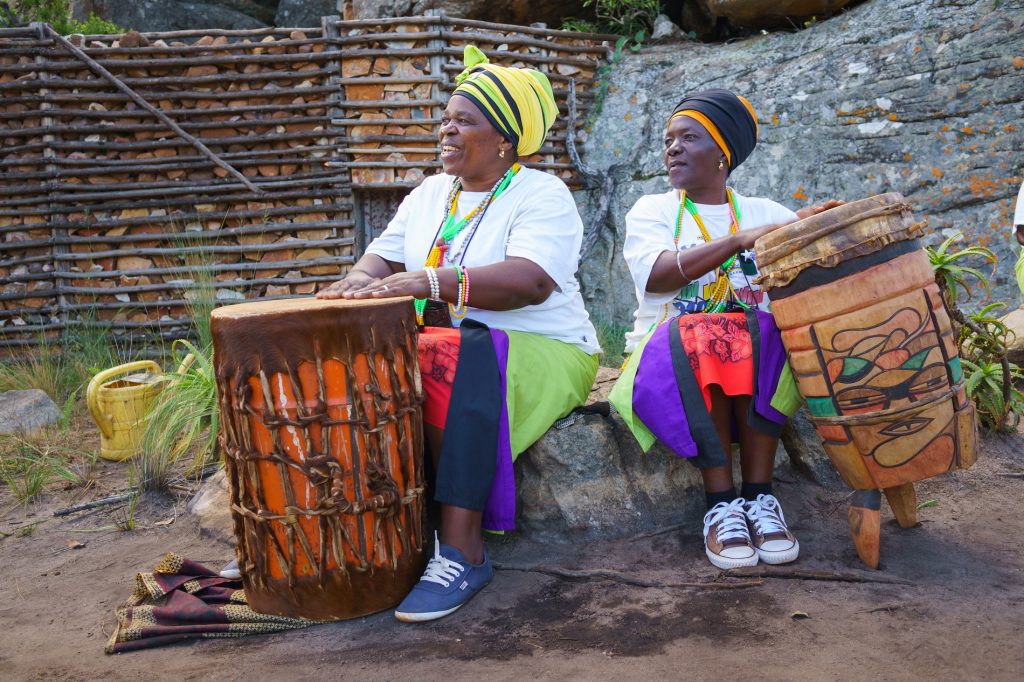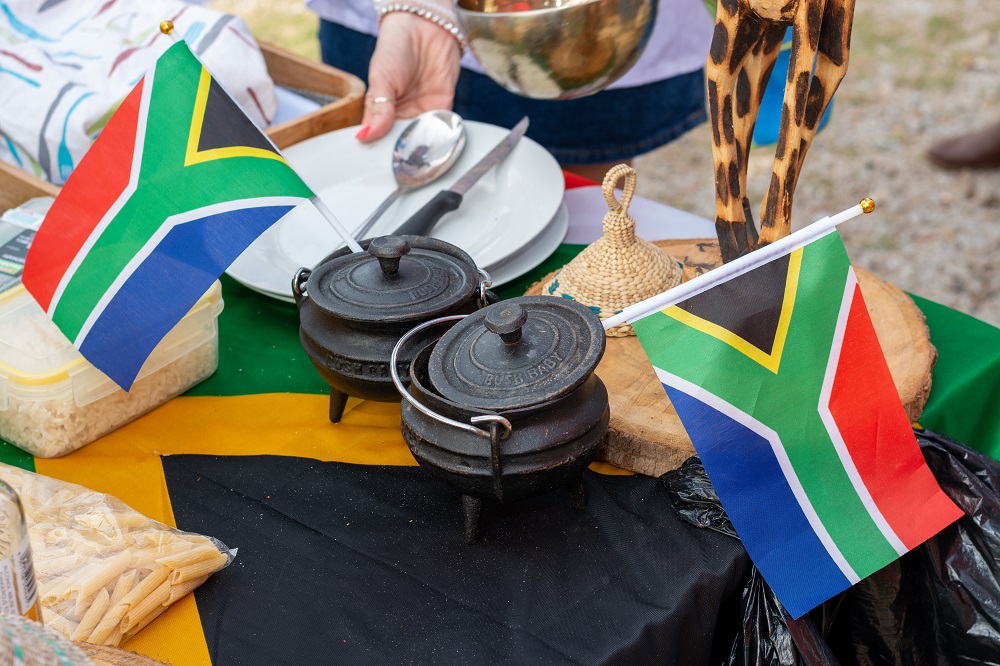What Does South African Culture Today Do?
What Does South African Culture Today Do?
Blog Article
Not known Facts About South African Culture Today
Table of ContentsAbout South African Culture TodayAn Unbiased View of South African Culture TodaySome Known Details About South African Culture Today The Best Strategy To Use For South African Culture TodayAn Unbiased View of South African Culture TodaySouth African Culture Today Things To Know Before You Get This
This adheres to with singing and drum whipping. The groom and bride then meet the seniors and speak about the relevance of their union. A matter of value in Zambian towns is the passing away of loved ones. All participants of the town put money, time and effort with each other for the burial of the deceased.During the mourning period; guys remain outside your home and the women stay inside your home of the deceased. After speaking concerning the dead, the village walks to the location of funeral to claim their last bye-byes. Music and dancing is an extremely essential aspect of the Zambian society. The numerous tribal units have their very own dance kinds; nevertheless, makishi is common amongst all people.
The 4-Minute Rule for South African Culture Today
When it pertains to songs, drums are made use of the most, with a variety of drumming events. In Zambia, majority of the individuals are Christian; Protestant and Roman Catholic. There are tiny groups of Muslims and Hindus, with the rest complying with regional native tribal ideas.

South African heritage and culture is immensely diverse, and contains various teams of individuals who each have their very own traditions and beliefs. Having such a diversity of people and societies is what makes South Africa so unique. In truth sense of the expression, we are a rainbow nation.
Making it the 7th on the listing of nations with the most Portuguese people in it outside of Portugal. Portuguese is not only a culture, yet it is also a language and a nationality. Portuguese people originate from the country of Portugal in Europe, nevertheless, due to Portugal (like lots of other countries in Europe) checking out the world and overcoming various other nations throughout the 15th 20th centuries, South Africa has what we call Portuguese South African's living in it.
South African Culture Today Fundamentals Explained
Among the prominent attributes of the topography is a plateau that covers practically 2 thirds of the center of the nation. The plateau complex climbs toward the southeast, where it culminates in the Drakensberg range, component of a cliff that separates the plateau from the seaside locations. The Drakensburg includes Sparkling wine Castle, the highest height in the country.
The region north of the Witwatersrand, called the bushveld, inclines downward from east to west toward the Limpopo River, which develops the global border. The western section of the plateau, the middleveld, likewise descends towards the west and varies in altitude between the highveld and bushveld. Between the Drakensburg and the eastern and southerly coast, the land descends to the sea.
Nearer the coast there is a low-lying level called the eastern lowveld. Southwest of the plateau the nation comes to be progressively a lot more dry, paving the way to the stony desert of the Great Karroo, verged on the eastern by the lower, better watered plateau of the Little Karroo. Dividing the completely dry southern interior from the sandy littoral of the southerly coast and West Cape is an additional range, the Langeberg.
Some Known Incorrect Statements About South African Culture Today
The nation's racially, ethnically, and politically divided history has created nationwide and subnational icons that still function as symbols of the country, and others icons that are accepted only by certain teams. The monuments to white settler conquest and political prominence, such as the Afrikaner Voortrekker ("leader") Monument in Pretoria and the Rhodes Monument recognizing the British colonial realm builder and Cape head of state Cecil Rhodes, continue to be sectarian signs.
The initial modern-day citizens were the San ("bushman") hunter-gatherers and the Khoi ("Hottentot") individuals, who herded animals (South African culture today). The San might have existed for countless years and left evidence of their existence in thousands of old cavern paintings ("rock art"). Bantu-speaking clans that were the forefathers of the Nguni (today's amaZulu, amaXhosa, amaSwazi, and vaTsonga individuals) and Tswana-Sotho language groups (today's Batswana and Southern and Northern Basotho) moved below eastern Africa as early as the fifteenth century

The 2 former republics of the Orange Free State and Transvaal (South African Republic) were developed by Afrikaner inhabitants who defeated and dispossessed the Basotho and Batswana. Lesotho would certainly have been forcibly integrated right into the Orange Free State without the extension of British protection in 1869. The best marriage of the country resulted from the South African War (18991902) between the British and both Afrikaner republics, which decreased the country to spoil at the beginning of the twentieth century.
Afrikaners traditionally considered themselves the just true South Africans and, while providing full citizenship to all citizens of European descent, denied that status to people of color up until the democratic transition of 1994. British South Africans maintain a feeling of cultural and social connection to Great Britain without compromising their identification as South Africans.
The smart Trick of South African Culture Today That Nobody is Discussing
The diversity and fragmentation within ethnic groupings and the balance of tensions in between those groups throughout the twentieth century stopped interethnic civil dispute. While intergroup stress over sources, privileges, and political dominance remain, those conflicts are as likely to pit Zulu versus Zulu as Zulu against Xhosa or African versus Afrikaner.
From colonial India, British merchants and administrators brought the rounded metal ornamental roofings and slender shoelace work columns that still exemplify the terraces of homes in towns and cities throughout the country. Holy places add a crucial architectural aspect even in the tiniest towns. Along with the rising steeples and traditional stonework of Afrikaans Dutch Reformed churches, Anglican churches, synagogues, mosques, and Hindu shrines supply range to the religious building scene.

Butchering and the developing of standard grain beer are necessary in securing the engagement and goodwill of the ancestors who are taken into consideration the guardians of good luck, success, and well-being. Indian neighborhoods preserve their indigenous cooking traditions and apply them on Islamic and Hindu ritual and ritualistic celebrations. Afrikaners and Coloured people collect at weekend breaks and special Continued celebrations at multifamily barbecues called braais, where area bonds are enhanced.
Because this was the key financial venture of both black Africans and white colonists, dispute between those groups focused on the possession of grazing land and animals. In 1867, the largest ruby deposits in the globe were discovered at Kimberley in the west central location. The wide range from those areas helped finance the exploitation of the best gold coral reef on the planet, which was uncovered on the Witwatersrand in 1886.
South African Culture Today Fundamentals Explained
This brought about misconceptions and deliberate misstatement in the ventures of white inhabitants and federal government authorities with African chiefs during the colonial period (South African culture today). In the facility of African books, some aspects of communal and primarily "tribal trust" land period were maintained, and also in white backwoods, forms of common period were still exercised in locations with African communities
After the autonomous transformation of 1994, programs for Recommended Reading land restitution, redistribution, and reform were set up, however development has actually been slow. The moved here white minority still manages eighty percent of the land. Following farming land invasions in Zimbabwe, the Department of Land Affairs has actually vowed to speed up land redistribution.
Report this page